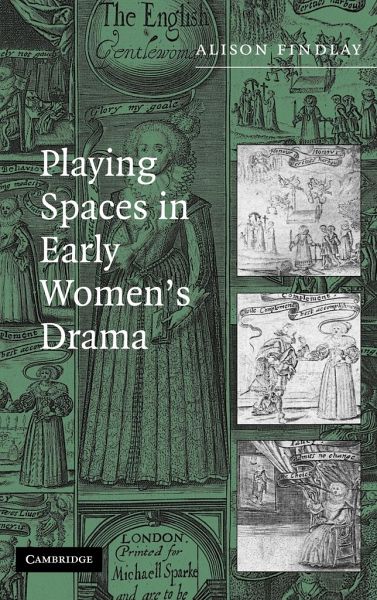
Playing Spaces in Early Women's Drama

PAYBACK Punkte
55 °P sammeln!
A study of the use of venue and setting in early women's drama.From the Abbess of Barking to Aphra Behn, women manipulated dramatic venues and settings to renegotiate their place in society. This is the first study to examine the playing spaces for early modern women's drama and how women played with space in scripts and performances. Using selected texts from 1376 to 1705, Findlay shows how their drama operated in five key sites: homes, gardens, courts, convents and cities. Aristocratic houses, country estates and city streets are theatrically reconfigured as homes, empty shells, and arenas o...
A study of the use of venue and setting in early women's drama.
From the Abbess of Barking to Aphra Behn, women manipulated dramatic venues and settings to renegotiate their place in society. This is the first study to examine the playing spaces for early modern women's drama and how women played with space in scripts and performances. Using selected texts from 1376 to 1705, Findlay shows how their drama operated in five key sites: homes, gardens, courts, convents and cities. Aristocratic houses, country estates and city streets are theatrically reconfigured as homes, empty shells, and arenas of possibility. Courtly venues reveal queens as adept producers in the royal theatres of power, while convents and academies are playing spaces to explore the possibilities of female company. This book sketches theatre histories onto what is often a blank space, investigating the rich inter-textuality of spatial practices to provide a richer understanding of how early women's drama works.
Table of contents:
Introduction; 1. Homes; 2. Gardens; 3. Courts; 4. Sororities; 5. Cities.
From the Abbess of Barking to Aphra Behn, women manipulated dramatic venues and settings to renegotiate their place in society. This is the first study to examine the playing spaces for early modern women's drama and how women played with space in scripts and performances. Using selected texts from 1376 to 1705, Findlay shows how their drama operated in five key sites: homes, gardens, courts, convents and cities. Aristocratic houses, country estates and city streets are theatrically reconfigured as homes, empty shells, and arenas of possibility. Courtly venues reveal queens as adept producers in the royal theatres of power, while convents and academies are playing spaces to explore the possibilities of female company. This book sketches theatre histories onto what is often a blank space, investigating the rich inter-textuality of spatial practices to provide a richer understanding of how early women's drama works.
Table of contents:
Introduction; 1. Homes; 2. Gardens; 3. Courts; 4. Sororities; 5. Cities.




